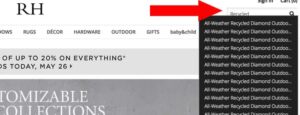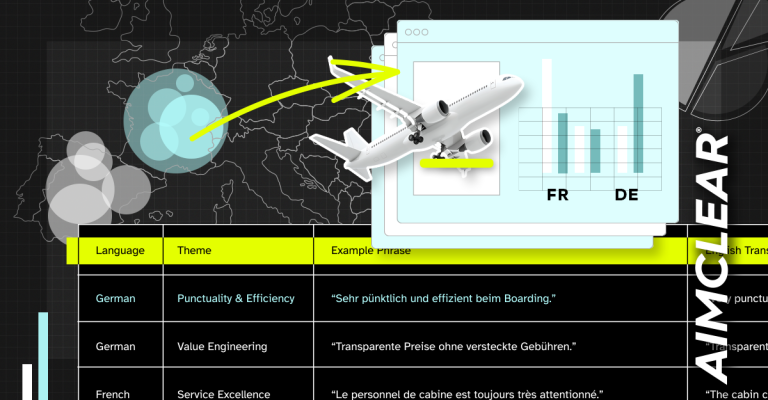Emergent retargeting tactics segment cookie pools in clever and exciting ways. This article highlights three cool behavioral retargeting hacks: internal site search, multiples and extrapolated shopping segmentation. These tactics apply to ecommerce, lead generation and most any digital marketing assignment. Sound like a techno-geek mouthful? Well it IS, so read on digital media-buying geeks!
[LAY PERSON VOCABULARY: “Retargeting“ means setting cookies and following site visitors as audiences most anywhere they go on the Internet, except for Google networks. “Remarketing“ is Google’s product name for retargeting within Google’s vast network. We’ll refer to both remarketing and retargeting as “Retargeting.”]
Retargeting Organic Site Search
We’ve written extensively about retargeting curated audience segments. Most marketers use page-touch metaphors when retargeting, following all unconverted users who hit specific URLs along the purchase pathway. The result is often a mish-mash-of-a-retargeting-bucket: some blend of search PPC, psychographic display, organic social, Facebook Ads, Twitter referrals, keyword not provided SEO, etc.

Any and all traffic sources are lumped together and retargeted as a single audience follow-cluster. This catchall approach can result in missed opportunities because not all users are best served by the same retargeting approach.
Consider retargeting internal search queries separately. Marketers tend to bemoan the loss of Google organic search data to keyword not provided because we can’t easily retarget segmented SEO traffic. Yet some forget the inherent value of internal organic site search data.
[VOCABULARY: “Internal search” means when site visitors utilize native search functionality on a website.]
What’s cool about internal search retargeting segments is that site owners already own behavioral data. There’s not need to buy AdWords and visitors need not even touch a category or product detail-URL to set a retargeting cookie. Visitors can be cookied via landing on internal SERPs. This solves a couple of problems; how to follow site visitors earlier in their buying cycle and getting around unfocused internal SERPs returned for obscure and unmapped semantics.
[VOCABULARY: “SERPs” means search engine results page.]
Segmenting unmapped internal searches for retargeting
- A Pottery Barn site visitor searches for “Old looking tables.” “Old looking tables” is not a keyword used as often in the product description for most “Reclaimed wood” or “Recycled wooden” tables.
- As a result, internal SERPs may be a bit off for a site of Pottery Barn’s technical stature. More than half the results in this case are unfocused. There are not enough recycled wooden tables featured. Visitors may not find and visit the correct product pages. Just as importantly, we won’t retarget these visitors appropriately, perhaps not at all.
- First, do the obvious and take the clue. Map the keyword “Old looking” to “Reclaimed” so the NEXT visitor searching with obscure semantics is better serviced via internal SERPs. Enterprise internal search is all about mapping obscure semantics to common keywords.
- Next, append the unrequited SERPs touch to the internal cookie pool themed from “[similar adjectives] + table.” Set the cookie when the users hit the SERPs page. You’ll now follow these users, even if they never hit the landing page for a specific product. Remember to filter out any users who have already converted.
- A main advantage here is that users never have to click on a result in the SERPs and hit a category or product landing page to be retargeted. You may be catching them earlier in the buying cycle. It’s just as possible the reason your visitor did not click in the SERPs is because the internal SERPs are not as strong as they could be.
- Retargeting themed internal site search is an antidote for imperfect SERPs because subsequent retargeted banner, driving visitors to a very specific landing page, gives marketers another crack at the SERPs. Retargeted ads are essentially enhanced “SERPs” in banner space.
Retargeting Multiple & Extrapolated Shopping Segments
Dynamically retargeting multiple products (in one banner) and extrapolated shopping segments (in the next) is freakin’ genius… hot, hot, hot. We can’t reveal data but the tactic speaks for itself.
- A user shops for a high-end stove on the Home Depot website. As part of the process, he compares several high-end products, visiting the pages and using the comparison engine.
- A few minutes later, the shopper visits Yahoo, Right Media’s exchange on Criteo’s retargeting network. An animated banner ad displays, which shows recently viewed products side by side, with text that cuts from product to product, price to price. This is pure genius.
- Upon refresh the next Home Depot ad shows other products the visitor did not view. Additional products are extrapolated from data, which portends products commonly purchased by users based on our visitor’s previously viewed products.
Pottery Barn also retargets multiples based on last products viewed and perhaps extrapolates. I viewed and eventually purchased the product on the left but did not view the product on the right.
Nascent retargeting tactics segment cookie pools in adroit and thrilling ways. Consider checking out these three excellent shopping behavioral retargeting hacks: internal site search, multiple and extrapolated shopping segmentation. Rock on, marketers!
Images Copyright: igor.stevanovic & Vook














